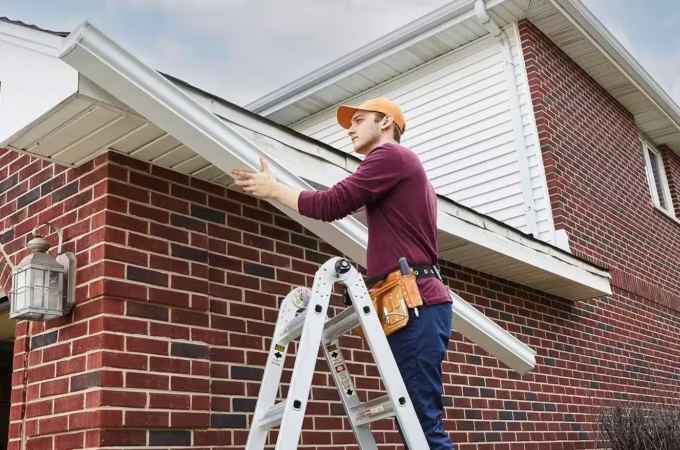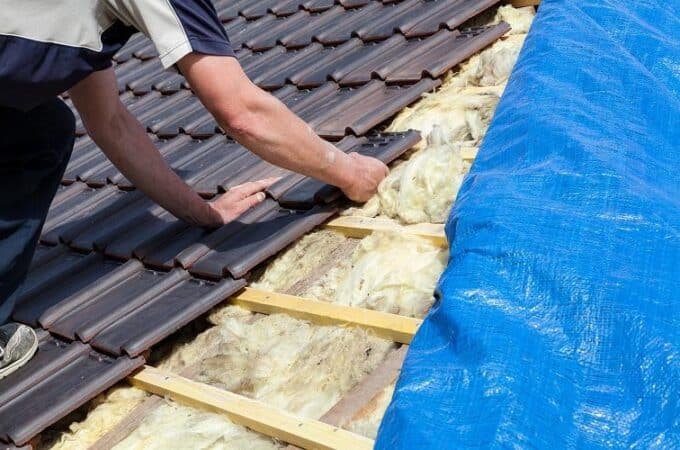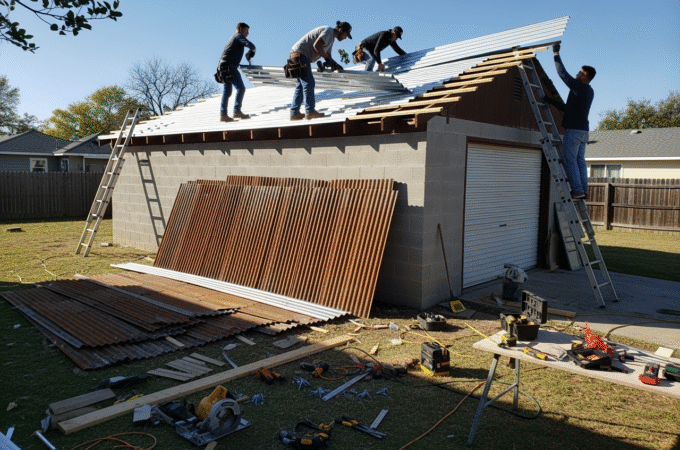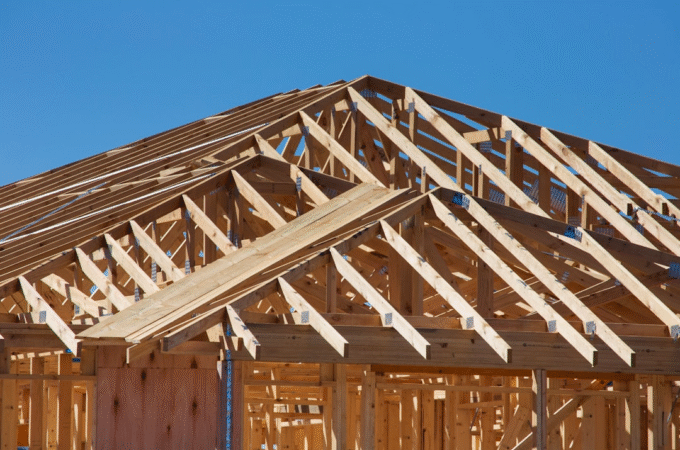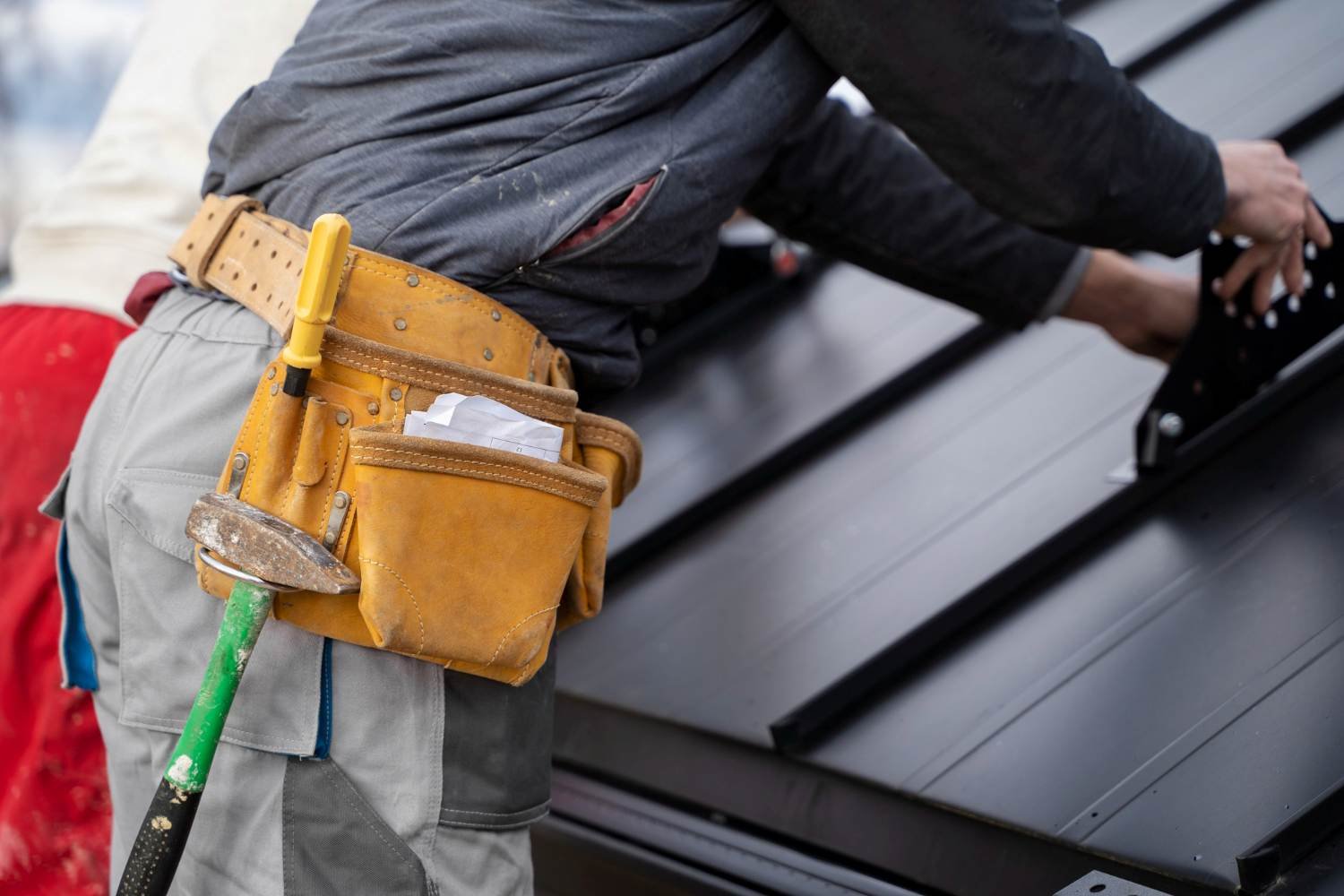
Protecting Your Roof from Extreme Weather: Essential Strategies
Table of Contents
ToggleKey Takeaways
- Regular roof inspections help identify and address vulnerabilities before severe weather strikes, minimizing the risk of major issues.
- Maintaining gutters and downspouts ensures proper water drainage, preventing leaks that can cause structural and interior damage.
- Trimming overhanging tree branches reduces the risk of impact from falling limbs during storms, which often leads to costly repairs.
- Upgrading to impact-resistant roofing materials enhances durability, protecting your investment from hail, debris, and wind damage.
- Proper attic insulation and ventilation prevent issues like ice dams, mold, and moisture buildup, ensuring long roof life and stable indoor conditions.
Extreme weather is consistently ranked among the leading threats to a home’s structure’s longevity, safety, and security—and your roof is your most critical barrier against these relentless outside forces. Whether you’re enduring heavy rain, driving winds, severe hail, blizzards, or unrelenting sun, the roof takes the brunt of it all, and even the smallest vulnerability can quickly turn into a major—and expensive—repair. Proactive roof care is far more than just a precaution; it’s vital to protecting your home’s value, maintaining a comfortable living environment, and safeguarding those inside. After a significant weather event, time is of the essence: seeking prompt professional help—such as emergency storm roof repair—can mean the difference between a quick fix and a catastrophic loss. By pairing rapid, decisive action with sound long-term maintenance strategies, you’ll give your home its best chance to withstand whatever extremes the weather has in store, year after year.
Regular Roof Inspections
Routine roof inspections provide a foundation for effective home maintenance, working as your first and best defense against everyday wear and the sudden damage that can follow a rough storm. Most experts advise that homeowners visually assess their roofs at least twice yearly—typically in the spring and fall—so you can catch deterioration that might have occurred during the harsher winter or summer months. When inspecting, look for missing, curling, or cracked shingles, rust or gaps in flashing, and loose or corroded fasteners. Expanding your inspection beyond the roof’s surface; scan gutters, flashing, vents, and skylights for visible damage, ensuring that everything is tightly sealed and draining properly. Indoors, take note of any ceiling stains, musty odors, or mold patches in the attic, all of which are symptoms of water infiltration or inadequate airflow that should be addressed quickly. By catching and repairing such issues before extreme weather hits, you give your roof a better chance to serve as a safeguard, minimizing both emergency repairs and the long-term costs of water damage or structural problems.
Signs You Shouldn’t Ignore
- Curled, cracked, or visibly missing shingles that leave parts of your roof exposed
- Granule loss or bald patches on shingles, which compromise their protective capabilities
- Visible sagging, dips, or uneven surfaces that point to structural weaknesses needing urgent attention
- Dark streaks, water stains, or clear leaks in the attic or ceilings after rainfall—all signs of deeper issues
While many homeowners can conduct initial inspections safely, hiring a professional roofing contractor adds more assurance. Experts have the tools and experience to find hidden weaknesses, spot early signs of deterioration, and recommend preventative solutions—especially in parts of the roof that may be inaccessible or too risky for DIY assessment.
Maintain Gutters and Downspouts
Your gutters and downspouts do more than usher rainwater away from your roof—they protect your foundation, siding, and landscaping from the cascading effects of poor drainage. When gutters become clogged with leaves, branches, or accumulated debris throughout the seasons, rainwater can overflow onto your home’s exterior, work under shingles, and even erode soil around the foundation. This can lead to serious issues such as basement flooding, mold outbreaks, and premature wood rot. Cleaning your gutters and downspouts at least twice a year markedly reduces these risks, allowing you to check for rust, leaks, sagging sections, or improper sloping. More frequent cleaning may be necessary in regions with lots of trees or heavy storm seasons. After each cleaning, run a hose through the downspouts to ensure water flows freely and is directed well away from the house. Prompt repairs or replacements help your drainage system perform reliably, regardless of how fierce the next storm gets.
[suggestion]Simple illustration of a house roof with rain, wind, and sunlight above it, plus icons of a shield, a tree branch, a gutter, and attic insulation—representing roof protection against extreme weather.[/suggestion]
Pro Tip: Install Gutter Guards
To further protect your gutters and simplify maintenance, consider installing gutter guards. These trays, screens, or covers are designed to block leaves and debris from entering your gutters while still efficiently capturing rainwater. Gutter guards significantly reduce your cleaning schedule, help prevent overflow and backups during storm surges, and even discourage pests from nesting within your downspouts. With the bonus of prolonging the life of your gutters and fascia boards, they are a worthwhile investment for any homeowner who wants hassle-free protection from water intrusion and the headaches it causes.
Trim Overhanging Tree Branches
Having mature trees near your house provides shade and beauty, but branches extending over your roof pose a considerable threat during extreme or moderate weather. High winds, ice accumulation, or lightning can easily topple heavy limbs, landing with enough force to shatter shingles, puncture the roof, crush gutters, or even damage the underlying structure of your home. The risk of falling branches increases if trees are diseased, dying, or haven’t been pruned in years. Regularly inspect all trees within striking distance of your home and keep their limbs trimmed back well clear of your roofline—even if it means removing several feet of overhang. Remove any limbs with visible cracks, brittleness, or dead patches, as they are likelier to break in a storm. If you’re unsure about the safety of a particular tree, or it leans too close to the house for comfort, hire a certified arborist to assess the situation and, if necessary, perform a safe removal or major pruning. Eliminating potential impact risks not only preserves your roof but can also limit future gutter blockages and discourage wildlife from finding easy access to your attic or home interior.
Upgrade to Impact-Resistant Roofing Materials
When hailstones pound down, branches snap in high winds, or airborne debris is hurled against your home, traditional roofing materials are often insufficient to deflect the damage. Transitioning to impact-resistant roofing materials such as Class 4 asphalt shingles, high-grade metal panels, or engineered composite tiles can dramatically affect your roof’s ability to endure the worst storms. Impact-resistant materials are engineered and rigorously tested to absorb and dissipate shock, resisting breakage and surface loss even under severe conditions. This extends your roof’s lifespan and may qualify you for discounts on homeowners insurance—with some insurers rewarding upgrades that reduce overall claims. Modern options come in various shapes, colors, and textures, so you can choose resilience without sacrificing curb appeal or your home’s architectural character. Whether building a new home or replacing an old roof, this upgrade is a lasting investment in your property’s strength and security.
Choosing the Right Material for Your Region
The most effective impact-resistant roof for your home depends on local weather risks and climate. In hail-prone regions, select shingles verified for superior hail impact resistance and consult with your roofer to ensure they meet industry standards. For areas susceptible to hurricane-force winds or heavy, wet snow, look into standing seam metal roofs or reinforced tile systems, known for their ability to resist lifting and withstand extreme pressure. If you’re uncertain about your options, local roofing professionals are a valuable source for recommendations tailored to your area.
Ensure Proper Attic Insulation and Ventilation
While exterior defenses are crucial, what goes on beneath your shingles is equally important to your roof’s resilience. Adequate attic insulation and effective ventilation work together to regulate heat and moisture within your home, which helps prevent ice dam formation during winter and minimizes overheating in the summer. In cooler climates, insufficient attic insulation can let heat escape from living spaces, warming the underside of the roof, melting snow, and encouraging hazardous ice dams when the runoff refreezes at the eaves. In hot weather, poor ventilation causes attic air to stagnate and temperatures to soar, accelerating shingle wear and encouraging mold or mildew growth on wooden supports and insulation. Regularly check your attic for warning signs: look for damp insulation, water spots, visible mold patches, or ongoing musty smells that suggest inadequate airflow or a hidden leak. Upgrading insulation to the recommended R-value for your area and ensuring proper venting will protect your roof, cut energy costs, and keep your indoor environment healthier all year round.
Attic Care Checklist
- Check that insulation is thick enough and meets the R-value standards for your climate zone.
- Keep soffit, ridge, and gable vents clean and clear to ensure continuous airflow through the attic.
- Inspect regularly for moisture damage, from wet insulation to discolored wood or sheetrock.
- Seal all pipes, wiring holes, and attic hatches to reduce air leakage from your living area below.
Combining sturdy attic insulation with ample ventilation not only boosts your roof’s resilience to weather extremes but also preserves indoor air quality and minimizes seasonal temperature fluctuations.
When you consistently apply these strategies, you create a robust shield around your home’s most valuable asset—its roof. Being proactive is the best policy: conduct inspections year-round, address potential problems right away, and don’t hesitate to consult experts for more complex repairs or weatherproofing upgrades.
Originally from the U.S, Rana Tarakji is an SEO Analyst, the founder of One SEO, a multinational link building company, and the author of “Off-site SEO Guide: A Hands-on SEO Tutorial for Beginners & Dummies”, and a web content specialist who now lives in Beirut, Lebanon. Rana’s work has been published in many print and online magazines and newspapers, such as Entrepreneur, Life Hacker, Upwork, Christian Today, and many more.

